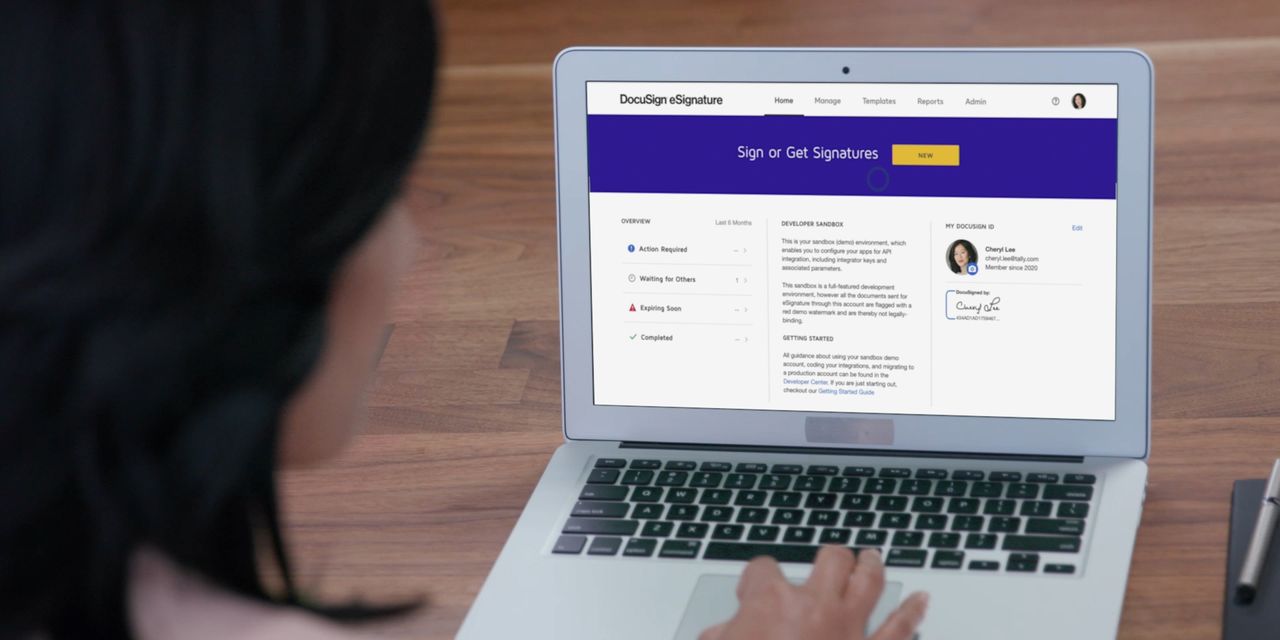Shares of DocuSign were flying higher in aftermarket action Thursday after the e-signature company topped expectations with its latest financial results.
The company posted a fiscal third-quarter net loss of $30 million, or 15 cents a share, compared with $6 million, or 3 cents a share, in the year-earlier period. On an adjusted basis, the company earned 57 cents a share, down a penny from 58 cents a share a year before, but significantly above the FactSet consensus, which was for 42 cents a share.
Revenue rose to $646 million from $545 million a year ago, whereas the FactSet consensus called for $627 million. DocuSign
DOCU,
posted $624 million in subscription revenue and $21 million in professional services and other revenue.
DocuSign reported $659.4 million in billings, defined as “sales to new customers plus subscription renewals and additional sales to existing customers.” Analysts tracked by FactSet were looking for $588.6 million.
The stock rose 11% in after-hours trading.
Chief Executive Allan Thygesen said on DocuSign’s earnings call that the company was looking to “create stronger efficiencies in our direct sales and field efforts and strengthen our partner ecosystem,” and he noted that “sales attrition is continuing to moderate, and we’re seeing stabilization in the field,” according to a transcript provided by Sentieo/AlphaSense.
For the fiscal fourth quarter, DocuSign executives expect $637 million to $641 million in total revenue, while the FactSet consensus was for $641 million. Executives also anticipate $705 million to $715 million in bookings, compared with the $707 million FactSet consensus.
DocuSign shares have fallen 71% so far this year, as the S&P 500
SPX,
has slipped 17%.
Thygesen, who took over as CEO in October, acknowledged DocuSign’s recent missteps but said the company was working to get back on track.
“As we experienced tremendous growth during the pandemic, we did not scale the team properly,” he said on the company’s earnings call. “We lost some innovation velocity. We didn’t fully address the changing market dynamics nor mature our operations and systems sufficiently. We understand those gaps, and we’re committed to moving forward with more transparency. I think the good news is that the future is in our own hands.”

